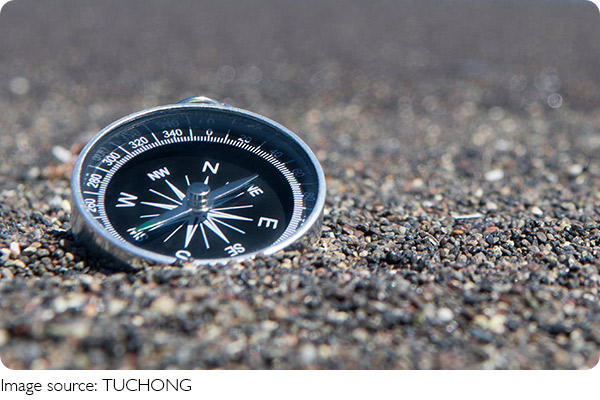Compass for Safe Navigation

A compass is a tool used to determine direction and is essential for navigation.
The magnetic compass, the most widely known type, has evolved in design and construction over the years, but its basic principle remains unchanged.
It consists of a magnetized needle that aligns with Earth's magnetic field, with one end pointing to the north magnetic pole and the other to the south magnetic pole.
History of Compasses
Humans have observed the principle of magnetism for thousands of years. Ancient Greeks were aware of magnetism, but they did not understand its connection to the Earth or the fact that a magnetized metal would point north. Similarly, people in Ancient China recognized the properties of magnetism and discovered that a magnetized bar of lodestone, when suspended on a string, would always point in the same direction.
What are the problems when buying sofas?
Which is better for your health, drinking water or drinking tea for a long time?
Don’t skip Saraswati Puja on Vasant Panchami! Find out why it’s crucial for your success and prosperity!
Are you also having trouble buying the travel bag you want? Then come and take a look!
Rattan furniture is trending again! Worried about dust, cracks, or mold? Think again—it's not what it used to be!
Hourglasses: A Timeless Tool for Measuring Time.
This phenomenon became intertwined with their spiritual practices, where leaders used a magnetic spoon balanced on a plate to predict the future. This is considered by some to be the earliest form of a compass, although compasses are more accurately defined as tools specifically designed for navigation. Notably, early Chinese compasses were oriented southward, unlike modern compasses, which point north. These instruments were called south pointing spoons or south pointers.

Evidence suggests that by the 1100s, explorers in both China and Europe were using compasses for navigation at sea. Some historians argue that the compass originated in China and spread to Europe via trade routes, while others believe Europeans developed the technology independently.
Origin of the Compass
Video by Discover Ancient China
Early Compasses
The earliest compasses consisted of a magnetized needle floating freely on a piece of wood or cork in a dish of water. As the needle settled, one end would point toward magnetic north. Over time, as scientists and engineers deepened their understanding of magnetism, the compass needle was mounted on a fixed pivot and placed on a card marked with the four cardinal directions: north, south, east, and west. Eventually, the compass card was expanded to include 32 points of direction.
Initially, compasses were used as a backup navigational tool when the sun, stars, or other landmarks were not visible. As compasses became more accurate and sailors learned to rely on them, they became an essential tool for explorers and travelers.
Adjustments and Adaptations
By the 15th century, explorers discovered that the north indicated by a compass needle was not the same as the Earth’s true geographic north. This difference between magnetic north and true north is known as variation (or magnetic declination for land navigators). It varies depending on the location, and if not accounted for, it could cause a navigator to veer off-course by several kilometers. To correct for this, navigators learned to adjust their compass readings to account for magnetic variation.
Impact of the Compass
The compass had a profound impact on the world, especially for those navigating the seas. More accurate than previous navigational tools, it enabled explorers to venture into unknown territories during the Age of Exploration, which began in the early 15th century. This period marked significant developments, both positive and negative.
European exploration fostered trade, the exchange of knowledge, and the expansion of global connections. However, it also led to the spread of disease, the colonization of new lands, and the exploitation and enslavement of Africans and indigenous populations.

 · Lifestyle Team
· Lifestyle Team